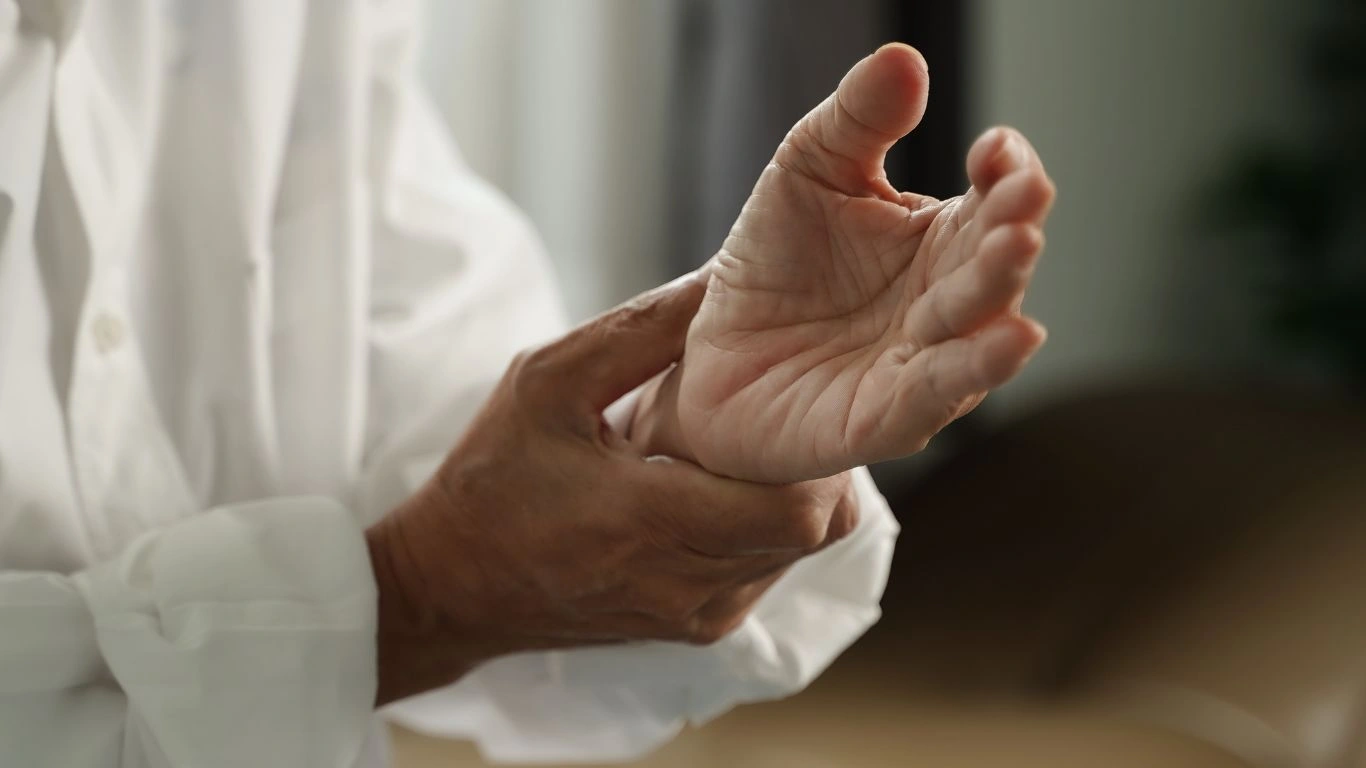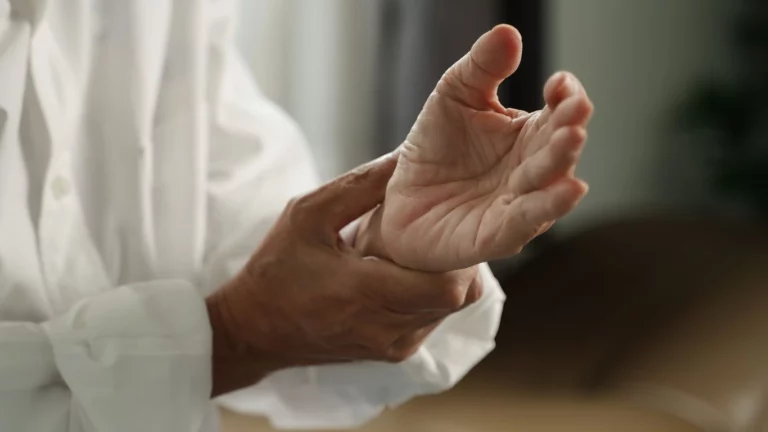Best Home Remedies for Joint Pain with Rheumatoid Arthritis
Living with rheumatoid arthritis (RA) can be a real challenge. As a Rheumatology Nurse Practitioner, I’ve seen firsthand how this condition can disrupt the lives of so many individuals. From joint pain to inflammation, the symptoms can often feel overwhelming. But here’s the good news: while there’s no cure for rheumatoid arthritis, there are plenty of home remedies for joint pain that can help manage symptoms and improve quality of life. In this article, I’ll share some practical, science-backed tips to reduce discomfort and make your daily routine a little easier. Whether you’re newly diagnosed or have been managing RA for years, these home remedies can provide some much-needed relief.
Understanding Rheumatoid Arthritis: What You Need to Know
Rheumatoid arthritis is an autoimmune disorder that causes chronic inflammation in the joints. Unlike osteoarthritis, which is caused by wear and tear, RA occurs when the body’s immune system mistakenly attacks healthy tissue in the joints. This leads to pain, swelling, and stiffness, particularly in the hands, wrists, knees, and feet. Over time, this can cause permanent joint damage if left untreated. It’s one of the most common types of autoimmune arthritis, and it affects millions of people worldwide.
One of the frustrating things about RA is its unpredictability. Some days, you might feel like you can take on the world, and other days, it’s all you can do to make it through the day without feeling completely drained from joint pain. The good news is that there are ways to ease those flare-ups and manage the symptoms. Let’s dive into some of the best home remedies for joint pain that I’ve seen work for many patients in my practice.
1. Incorporating Anti-Inflammatory Foods into Your Diet
When managing RA, what you eat can play a huge role in how you feel. Inflammation is at the heart of RA symptoms, so consuming foods with natural anti-inflammatory properties can help reduce swelling and pain in the joints. A diet rich in omega-3 fatty acids, antioxidants, and vitamins can go a long way in managing RA.
What to eat: Include fatty fish like salmon, mackerel, and sardines, which are packed with omega-3s. Studies show that omega-3 fatty acids can help reduce inflammation and may even help with joint stiffness. Fresh fruits and vegetables, particularly leafy greens like spinach and kale, are also excellent choices due to their high antioxidant content.
My personal experience: I’ve recommended anti-inflammatory diets to several patients, and the results speak for themselves. Many have reported a reduction in their overall joint pain and stiffness after just a few weeks of eating more anti-inflammatory foods. While it’s not a magic fix, it’s a great step toward managing your condition effectively.
2. The Power of Turmeric and Ginger
If you’ve heard about turmeric, you probably know it’s the golden spice often found in curry. But it’s much more than just a flavorful addition to your dishes! Both turmeric and ginger have strong anti-inflammatory properties, and they’ve been used for centuries in traditional medicine to treat a variety of ailments, including joint pain.
How to use: You can add turmeric to your food or drink it as a tea. Some people like to mix turmeric powder with warm milk to make a comforting “golden milk.” Ginger can be added to tea, smoothies, or used fresh in cooking. The key active ingredient in turmeric, curcumin, is thought to help reduce inflammation in the body, while ginger may help improve circulation and reduce pain.
Personal tip: I’ve had several patients tell me that they’ve found relief from morning stiffness by drinking a warm cup of turmeric-ginger tea first thing in the morning. It’s an easy and soothing way to get your day started on the right foot.

3. Epsom Salt Baths for Soothing Joint Pain
If you’re looking for an affordable and relaxing way to ease joint pain, I can’t recommend Epsom salt baths enough. Epsom salt is made of magnesium sulfate, which is believed to have anti-inflammatory and muscle-relaxing properties. Soaking in a warm Epsom salt bath can help relax stiff muscles and joints, relieve pain, and reduce inflammation.
How to use: Simply add a cup or two of Epsom salt to your bathwater and soak for about 20 minutes. Make sure the water isn’t too hot, as extreme heat can sometimes aggravate inflammation. You can also try using Epsom salt compresses on specific areas of pain if a full bath isn’t an option.
Personal note: I’ve had several patients tell me that they find this method incredibly soothing after a long day. It’s a simple, low-cost way to manage the pain that comes with RA, and it can also help promote a better night’s sleep.
4. Gentle Exercise: Move to Improve
It may seem counterintuitive to move your joints when they’re in pain, but gentle exercise is actually one of the most effective ways to manage rheumatoid arthritis. Regular movement helps keep the joints flexible, reduces stiffness, and strengthens the muscles surrounding the joints. It’s important to focus on low-impact activities, though, to avoid aggravating the inflammation.
What to try: Swimming and water aerobics are fantastic choices because the buoyancy of the water reduces strain on your joints. Walking, cycling, and yoga are other great options. The key is to start slow and listen to your body. You don’t have to do hours of intense exercise – just 20-30 minutes of gentle movement each day can make a big difference.
From experience: I’ve seen firsthand how physical activity can make a world of difference for people with RA. One of my patients started incorporating daily walking into his routine, and after a few weeks, he reported feeling much less stiffness and more energy overall. It’s all about finding the right balance.

5. Try Heat and Cold Therapy for Instant Relief
When your joints are flaring up, heat and cold therapy can offer quick, temporary relief. Heat helps to relax muscles and increase circulation, while cold therapy can reduce inflammation and numb the area. The key is knowing when to use each one.
- Heat therapy: Ideal for stiff or achy joints. You can use heating pads, warm towels, or even soak in a warm bath.
- Cold therapy: Best for acute flare-ups or swelling. Ice packs, cold compresses, or even frozen peas can work wonders.
Tip: I often recommend alternating between heat and cold for maximum effect. For instance, you might use a cold compress for 15 minutes, followed by 15 minutes of heat. This combination can help reduce both inflammation and stiffness.

6. The Role of Supplements in Managing Rheumatoid Arthritis
In addition to dietary changes and physical therapies, supplements can also play a role in helping to manage rheumatoid arthritis (RA). While supplements can’t replace traditional medications or disease-modifying treatments, they can complement your existing care plan and provide additional support for your joints. But before starting any supplement, always talk to your healthcare provider – you want to make sure it’s the right fit for your specific needs.
What to consider: Some supplements have shown promise in reducing inflammation, supporting joint health, and improving mobility. Two popular ones are glucosamine and chondroitin, which are often used to help with cartilage repair and joint pain. Fish oil, which is high in omega-3 fatty acids, has been extensively studied and is known for its anti-inflammatory effects.
Turmeric supplements: If you’re not keen on the taste or the hassle of incorporating turmeric into your meals every day, consider taking a turmeric supplement. The active compound, curcumin, is much more concentrated in supplement form, so it can be easier to get the benefits you’re after without dealing with the spice itself.
Personal experience: I’ve had patients who’ve noticed a decrease in joint stiffness after using glucosamine supplements for a few months. Again, it’s not a miracle cure, but as part of a well-rounded approach, it can make a noticeable difference in their quality of life.

7. Staying Hydrated: A Simple but Powerful Remedy
It may seem simple, but staying hydrated is essential when managing rheumatoid arthritis. Dehydration can exacerbate joint pain and stiffness, as well as leave you feeling sluggish. Keeping your body well-hydrated helps keep the tissues around your joints lubricated, reducing friction and helping to ease the discomfort that comes with RA.
How much water do you need? Generally, the recommendation is to drink at least 8 glasses of water a day, but individual needs can vary depending on activity levels, climate, and other factors. If you’re active or live in a hot climate, you may need more. Drinking water regularly throughout the day is key, rather than waiting until you’re thirsty, which can often be a sign of early dehydration.
My recommendation: For some of my patients, I suggest adding a few slices of lemon, cucumber, or mint to their water for a refreshing twist. Not only does it taste great, but staying hydrated also promotes better digestion, clearer skin, and more energy overall.
8. Managing Stress: The Link Between Stress and Joint Pain
Many people don’t realize that stress can significantly impact rheumatoid arthritis symptoms. Stress is a known trigger for inflammation in the body, and for those with RA, it can make symptoms like joint pain, fatigue, and stiffness even worse. Learning to manage stress is a crucial part of managing RA, and the good news is there are several effective ways to do so.
What to try: Mindfulness techniques such as meditation, deep breathing exercises, and progressive muscle relaxation can help reduce the stress response. Yoga is another fantastic option for combining movement with mindfulness, helping to reduce physical tension while calming the mind. Regular exercise, as mentioned earlier, is a great stress reliever as well.
From my experience: I’ve seen that my patients who incorporate stress management techniques into their daily routine often report feeling better overall. The reduction in stress can make a huge difference in their perception of pain and their ability to move more freely throughout the day. It’s not a cure for RA, but it’s certainly a valuable part of the puzzle.

9. Acupuncture: A Traditional Approach for Pain Relief
Acupuncture, an ancient Chinese healing technique, has been gaining popularity in recent years for its potential to help with various chronic conditions, including rheumatoid arthritis. The practice involves inserting fine needles into specific points on the body, and it’s believed to help stimulate the body’s natural healing processes, reduce pain, and improve circulation.
How it helps: Research has shown that acupuncture may help reduce RA symptoms by decreasing inflammation and improving joint mobility. Many people with RA have found acupuncture to be a helpful supplement to their other treatments, especially when dealing with persistent pain.
Personal experience: I’ve had several patients who were initially skeptical about acupuncture but found it incredibly helpful in managing their pain. After a few sessions, they noticed a decrease in joint stiffness and a boost in energy. While it’s not a one-size-fits-all solution, it’s definitely worth considering if you’re open to alternative treatments.
10. Managing Your Sleep: Quality Rest for Better Health
Getting enough quality sleep is often overlooked as part of an RA treatment plan, but it’s incredibly important. Poor sleep can exacerbate joint pain, increase fatigue, and leave you feeling irritable and less able to cope with the challenges of living with rheumatoid arthritis.
How to improve sleep: One of the best things you can do is establish a regular sleep routine. Try to go to bed and wake up at the same time every day, even on weekends. Make your bedroom a peaceful, relaxing environment – this includes limiting screen time before bed, keeping the room cool and dark, and avoiding caffeine in the afternoon.
Personal tip: For some of my patients, I recommend incorporating a bedtime routine that includes gentle stretches or relaxation techniques, like deep breathing or progressive muscle relaxation. It helps signal to the body that it’s time to wind down, leading to better sleep quality and, in turn, less pain and stiffness the next day.

11. Essential Oils for Joint Pain Relief
Essential oils have been used for centuries for their medicinal properties, and some can be particularly beneficial for those with rheumatoid arthritis. Essential oils like lavender, eucalyptus, and peppermint are known for their anti-inflammatory and pain-relieving properties. They can help reduce joint pain, swelling, and stiffness when used in the right way.
How to use essential oils: The most common way to use essential oils for arthritis pain is through topical application. You can dilute a few drops of essential oil with a carrier oil, like coconut or olive oil, and gently massage it into the affected joints. Another option is to add a few drops of essential oil to a diffuser to help with relaxation and stress reduction.
From personal experience: I’ve found that many of my patients enjoy the calming effects of lavender essential oil, especially before bed. It’s a simple way to wind down after a long day of managing RA symptoms. Some even use peppermint oil to help relieve muscle pain by applying it directly to sore areas for a cooling effect.

12. The Benefits of Joint Protection Techniques
When you have rheumatoid arthritis, it’s crucial to protect your joints from unnecessary stress. Joint protection techniques are strategies that help reduce the pressure placed on your joints during daily activities. These techniques don’t just help with pain relief – they also help prevent further damage to your joints over time.
What are joint protection techniques? These techniques can include using assistive devices (like grab bars, canes, or specialized tools) to help with tasks that put strain on your joints. You can also modify how you perform certain tasks, like avoiding heavy lifting, using your body’s larger muscles to perform movements, and taking regular breaks to rest your joints.
Personal advice: I always encourage my patients to learn how to pace themselves throughout the day. Many of us tend to push through tasks when we’re in pain, but taking short breaks to rest can make a big difference in how your joints feel at the end of the day. I’ve seen people dramatically improve their ability to manage RA pain just by adopting a few simple joint protection habits.
13. Collaborating with Your Healthcare Team for Optimal RA Management
While home remedies and lifestyle changes are important parts of managing rheumatoid arthritis, working closely with your healthcare team is essential. A team-based approach ensures you’re getting the right treatments, medications, and support tailored to your specific needs. Rheumatologists, nurse practitioners, physical therapists, and dietitians can all play an integral role in your care.
Why it matters: Rheumatoid arthritis is a chronic condition that requires ongoing monitoring and adjustments to your treatment plan. Having a trusted healthcare team that understands your goals and challenges is crucial for achieving the best possible outcome. Don’t hesitate to ask questions or bring up concerns – your team is there to help guide you through the process.
From my own experience: I’ve seen patients who’ve really benefited from taking an active role in their treatment decisions. One patient of mine began working closely with both a dietitian and a physical therapist, and together, they were able to create a comprehensive plan that not only addressed the symptoms but also improved her overall well-being. This kind of collaboration is key to long-term success in managing RA.

14. The Role of Positive Mental Health in Managing RA
Living with rheumatoid arthritis can be mentally challenging, and it’s important to address your mental health alongside your physical symptoms. Chronic pain can lead to feelings of frustration, anxiety, and depression, which can, in turn, make your physical symptoms worse. That’s why maintaining good mental health is just as important as managing your RA physically.
How to promote mental well-being: Engaging in activities you enjoy, staying connected with loved ones, and practicing mindfulness can all help alleviate stress and improve your mood. Therapy or counseling is another option, especially for those struggling with feelings of isolation or anxiety related to their condition.
Personal insight: Over the years, I’ve found that patients who maintain a positive outlook, even on tough days, tend to fare better overall. While it’s perfectly normal to feel down from time to time, staying mentally strong is crucial to managing the emotional rollercoaster that often comes with RA. I’ve seen this firsthand in my patients, many of whom report feeling better after they’ve made mental health a priority.
References
For more information on rheumatoid arthritis and home remedies, feel free to check out these trusted sources:
Disclaimer
The information provided in this article is intended for informational purposes only and is not a substitute for professional medical advice, diagnosis, or treatment. Always consult your healthcare provider before starting any new treatment regimen, making significant lifestyle changes, or using alternative remedies. Each person’s experience with rheumatoid arthritis is unique, and it’s important to find a care plan that works best for you.

Tarra Nugroho is a dedicated Nurse Practitioner with a strong foundation in family and preventive care. She brings both compassion and clinical expertise to her practice, focusing on patient-centered care and health education. As a contributor to Healthusias.com, Tarra translates medical knowledge into clear, empowering articles on topics like women’s health, chronic disease management, and lifestyle medicine. Her mission is simple: help people feel seen, heard, and informed—both in the clinic and through the content she creates. When she’s not caring for patients, Tarra enjoys weekend hikes, plant-based cooking, and curling up with a good health podcast.






